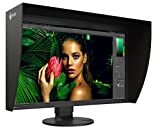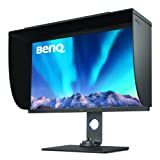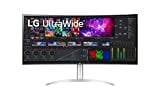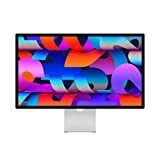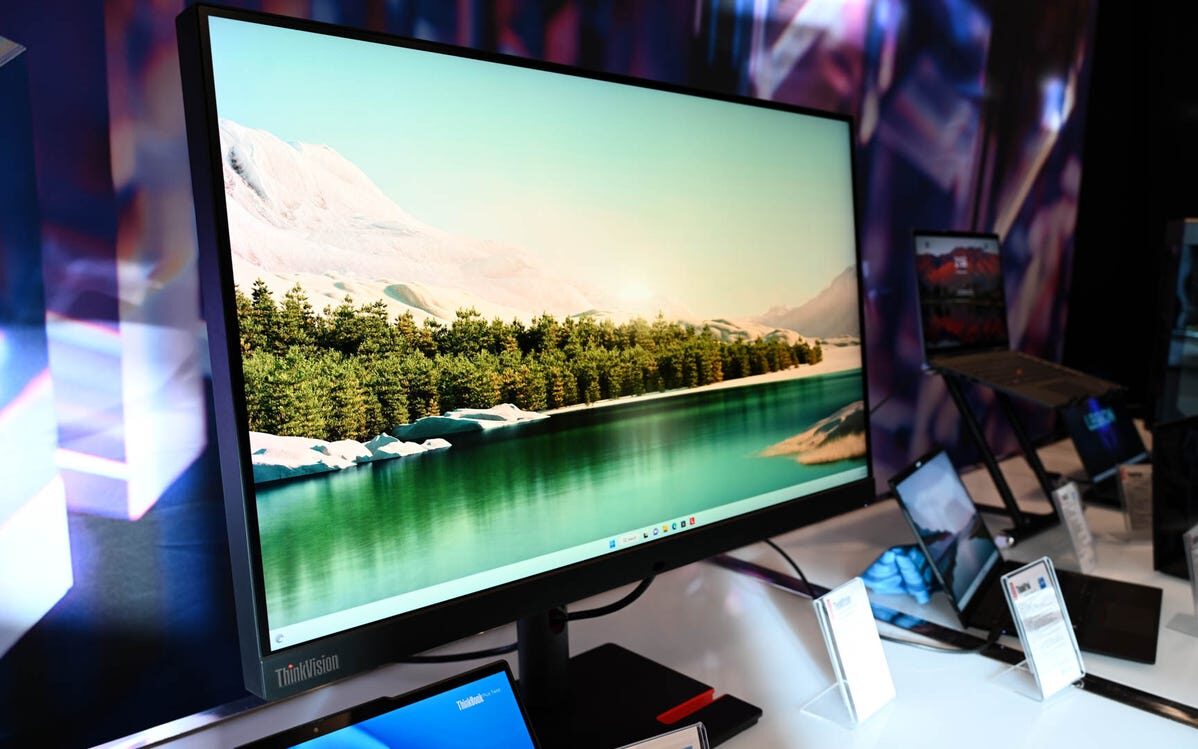
What to Look For in a Monitor in 2023
There are many things to consider while buying a monitor for photo editing, but color-related attributes sit at the top of the list. You want a monitor with excellent color performance, meaning it should have great color accuracy and wide coverage of the color spaces you require for your work.
Display panel technology plays a significant role in any monitor’s color accuracy. And among the various LCD screens, IPS panels have the best accuracy. So, it’s a good idea to go for IPS monitors and avoid TN and VA-type panels. OLED panels can also offer excellent color accuracy, but they are still relatively rare for monitors as opposed to TVs.
Among other factors, you would want to consider the size and resolution of your monitor. While a bigger size is typically better, 27 inches offers a sweet spot between the required desk space and viewing distance. But, in the end, it’s a matter of personal preference.
Similarly, while a 4K screen will undoubtedly show images in sharper detail and closer to its original resolution, a 1440p display is perfectly good for editing photos.
On the connectivity side, make sure your computer, whether it’s a desktop or laptop, can be easily connected to the monitor. Laptop owners will certainly appreciate a USB Type-C input with DP Alt mode and power delivery, as it allows a single cable operation.
Finally, of course, your budget is an important consideration. But remember, a great photo editing monitor will last you a long time and will be worth investing extra in. So make sure to keep that in mind while shopping for the monitor.
Best Monitor for Photo Editing Overall: Eizo ColorEdge CG2700S
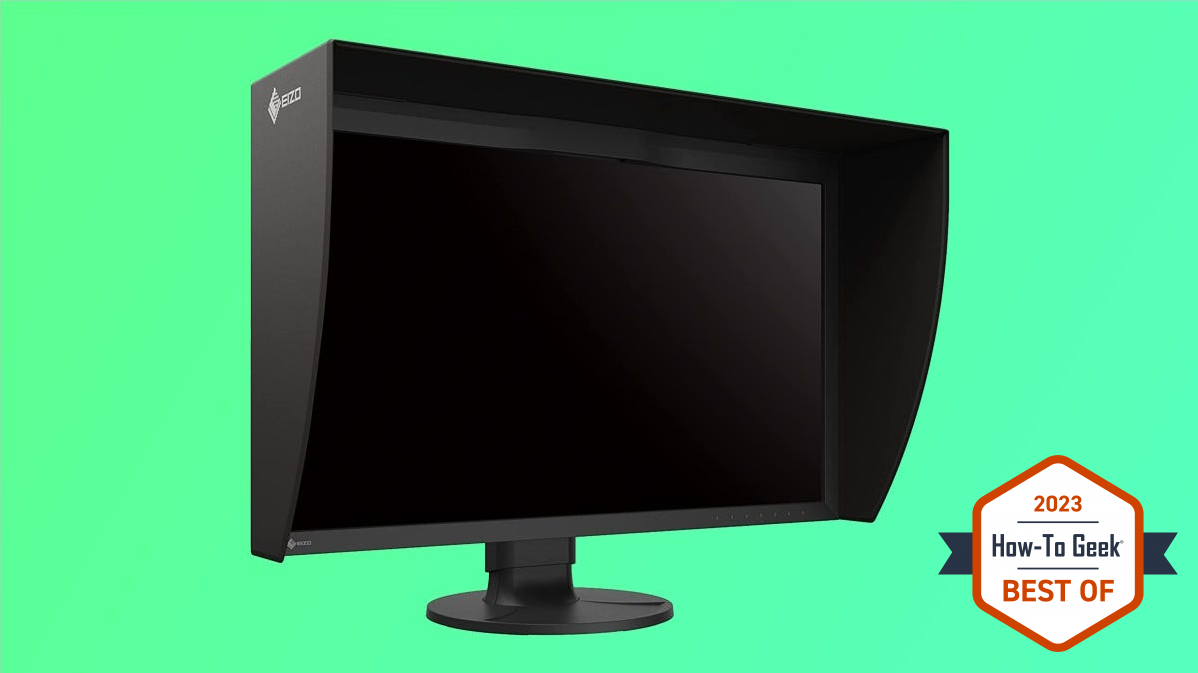
Pros
- ✓ Built-in calibration sensor
- ✓ 99% of AdobeRGB coverage
- ✓ Expansive connectivity options, including USB-C
Cons
- ✗ Not 4K
- ✗ Expensive
Photographers have long loved Eizo’s ColorEdge series monitors for their impressive performance, and the CG2700S is no exception. It’s a fantastic monitor that has been made keeping the needs of photo and video editors in mind. It features a 27-inch 1440p IPS panel that can display 99% of Adobe RGB, 98% of the DCI-P3, and 100% of the sRGB color spaces.
You can also pick from nine different display modes depending on your requirements, each being customizable to exactly what you need.
One of its biggest highlights is the company’s self-calibration solution that uses a built-in sensor with the ColorNavigator software to calibrate the display automatically. This saves you the trouble of needing to calibrate the monitor yourself.
You also get an excellent suite of inputs and connectivity options, such as a USB Type-C port with DP Alt mode and 92W power delivery, DisplayPort, and HDMI. Plus, there are two USB 3.2 Gen 1 ports, two USB 2.0 ports, and a Gigabit Ethernet port, making it an excellent companion to any laptop without many ports.
At over $2,500, it’s undoubtedly a significant investment. But if you are a professional who deals with images daily and needs to deliver top-notch quality work, the Eizo monitor will be a worthwhile investment and, more importantly, will last a long time.
If 4K is essential to your work, then the CG2700S is not the right monitor for you. You can opt for our 4K pick or Eizo’s CG2700X, though the latter is significantly more expensive at nearly $3,500.
Best Monitor for Photo Editing Overall
Eizo ColorEdge CG2700S
The Eizo ColorEdge CG2700S is an all-around solid choice for any photographer or editor. It comes with a built-in calibration tool and exceptional coverage of every color space that matters.
Best Budget Monitor for Photo Editing: Asus ProArt Display PA279CV
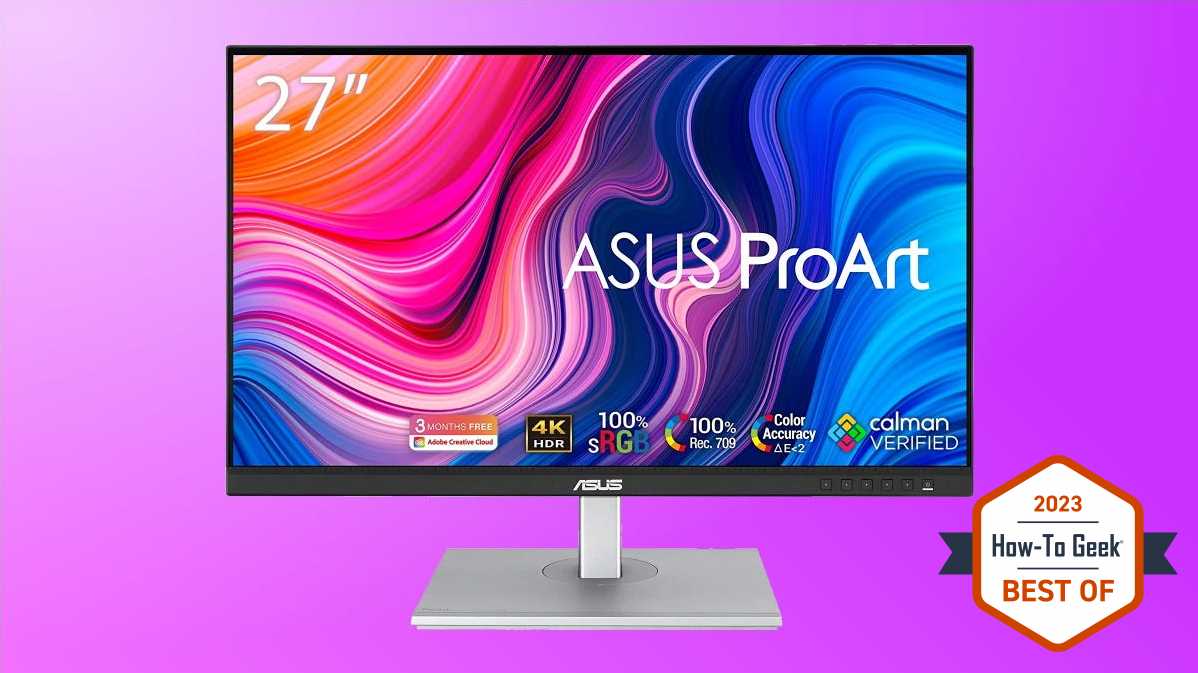
Pros
- ✓ USB-C support with DP Alt mode and power delivery
- ✓ 100% sRGB coverage
- ✓ Excellent out-of-the-box color accuracy
- ✓ 4K resolution for crisp detail
Cons
- ✗ Less than 85% of AdobeRGB coverage
- ✗ Luminance uniformity issues
The Asus ProArt Display PA279CV is a monitor aimed at creatives, but thanks to its mainstream pricing, it’s far more accessible to budget shoppers. It features a 27-inch 4K IPS panel, which gives you plenty of screen real estate, and the 4K resolution ensures you can view images in sharp detail.
The monitor comes factory calibrated for sRGB and offers a Delta-E color accuracy of less than two out of the box. While the monitor’s design is simple and utilitarian, the bundled stand is quite ergonomic and offers tilt, swivel, pivot, and height adjustments.
In other features, the PA279V houses a comprehensive set of connectivity options. You get two HDMI 2.0 ports, one DP 1.2, and one USB-C with DP Alt mode and 65W power delivery. The display also acts as a USB hub with four USB 3.2 Gen 1 Type-A ports to connect peripherals and storage devices.
You’ll also be happy to know that the Asus monitor can hit over 400 nits in SDR, which is excellent for use in bright rooms.
Unfortunately, to reach its relatively affordable pricing, Asus had to make a few sacrifices. So while the screen offers 100% coverage of the sRGB and Rec. 709 color spaces, you only get 84% of Adobe RGB and 86% of the DCI-P3. Uniformity is another area where the PA279V disappoints, as there is up to 15% luminance variation in parts of the screen.
So if AdobeRGB coverage or screen uniformity is critical to your workflow, you will be better off with one of our other recommendations. But otherwise, it’s worth considering if you don’t have a big budget.
Best Budget Monitor for Photo Editing
ASUS ProArt Display PA279CV
Creatives on a budget will love the Asus ProArt Display PA279CV. It offers complete coverage of the sRGB color space and comes color calibrated from the factory.
Best 4K Monitor for Photo Editing: BenQ SW321C
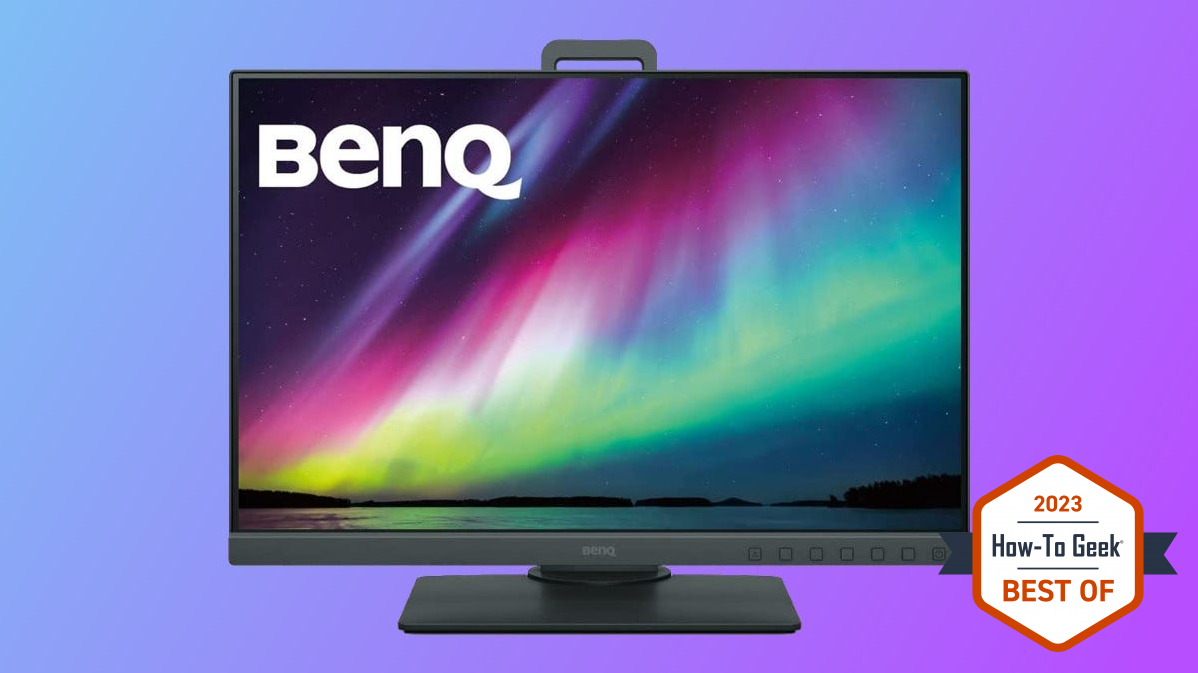
Pros
- ✓ 99% AdobeRGB and 95% DCI-P3 coverage
- ✓ Great screen uniformity
- ✓ Excellent out-of-the-box accuracy
Cons
- ✗ Limited supported printers in Paper Color Sync mode
- ✗ Palette Master Elements software is buggy
The SW321 is the best monitor in BenQ’s PhotoVue lineup and perfect for anyone looking for a 4K display for photo editing. It comes with “Calman Verified” certification for out-of-the-box accuracy, and there is support for hardware calibration to help you keep the color accuracy at an optimal level.
It also boasts excellent color space coverage with 100% sRGB, 99% AdobeRGB, and 95% DCI-P3 coverage. Plus, there are 14 color modes, of which you can program three to the included hotkey puck for a quick switch.
Screen uniformity is another area where the BenQ shines with less than 6% brightness variance and a Delta E of less than 1.7 in color deviation.
In other highlights, you get a bundled shading hood to minimize glare, GamutDuo Mode to compare a picture in two different color spaces side by side, and the Paper Color Sync mode to preview how an image will look in print.
BenQ has also packed two HDMI 2.0 ports and one DP 1.4. Plus, there is a USB-C port with DP Alt mode and 60W power delivery for a single cable connection with a laptop.
As you can expect, all these features add up in terms of cost. But thanks to the monitor’s solid color accuracy, uniformity, and coverage, it’s still a good value for professionals. The only gripe you may have is the buggy Palette Master Elements calibration software from BenQ and the limited selection of printers and paper in Paper Color Sync mode.
Best 4K Monitor for Photo Editing
BenQ SW321C
BenQ’s SW321 is the 4K monitor to beat for photo editing. It covers 99% of the AdobeRGB color space and has helpful features like Paper Color Sync mode.
Best Ultrawide Monitor for Photo Editing: LG 40WP95C-W
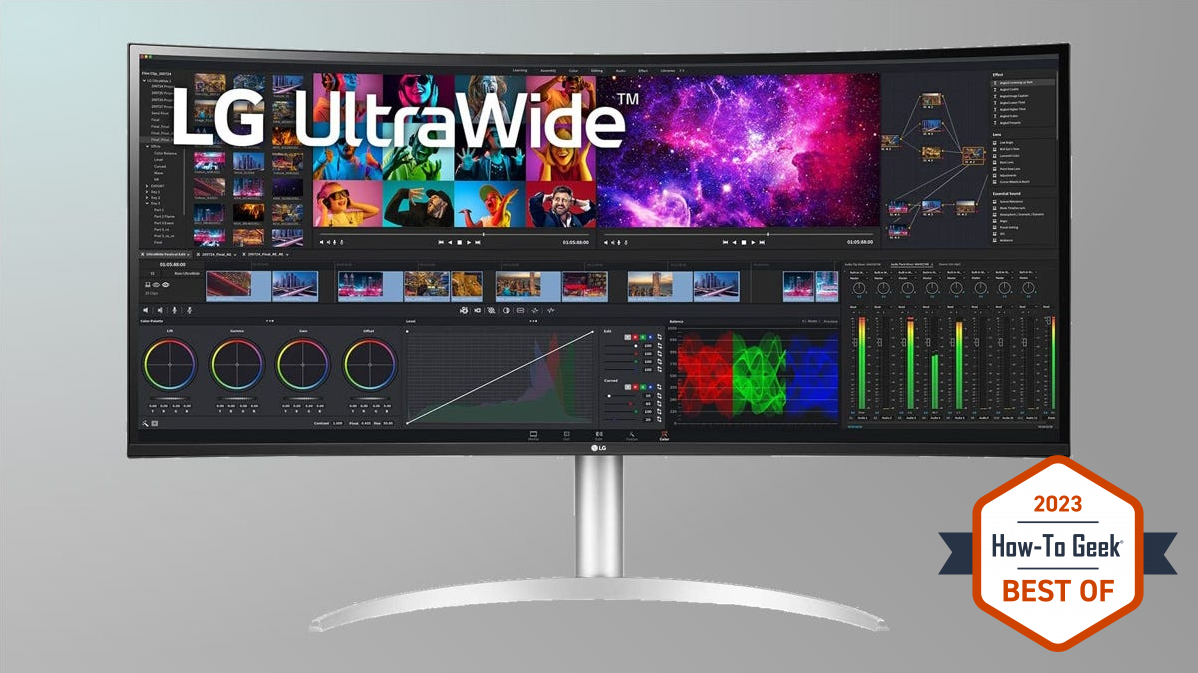
Pros
- ✓ 5K2K resolution gives tons of screen real estate for multitasking
- ✓ Thunderbolt 4 support
- ✓ Factory calibrated and complete coverage of sRGB
- ✓ Curved screen helps with physical fatigue
Cons
- ✗ Doesn’t get very bright to counter glare
The LG 40WP95C-W is an excellent ultrawide monitor to replace your dual-display setup. It features a 5K2K resolution, essentially 4K but with 33% more horizontal space. This will undoubtedly come in handy while multitasking.
Besides being ultrawide, the LG monitor is also curved with a 2500R curve radius. It’s a gentle curve but helps keep most, if not all, of this 40-inch display in your field of view without turning your head.
Built for creatives, the 40WP95C-W comes factory calibrated and covers the entire sRGB color space. You also get 90% of AdobeRGB and 95% of DCI-P3. Plus, you can use LG’s Calibration Studio software with a calibrator to keep the colors accurate.
Connectivity options are solid, and you can pick from two HDMI 2.0, one DP 1.4, and two Thunderbolt 4 (TB4) ports. The second TB4 allows you to daisy chain a second monitor if needed. And the TB4 ports support 96W power delivery to keep most connected laptops fully charged.
The monitor has a clean design, and the included stand is fairly ergonomic. You can adjust height, tilt, and swivel. But like most ultrawide monitors, there is no support for a pivot to portrait mode.
The only aspect of this monitor that may trouble some people is the brightness, mainly those working in very bright environments. Otherwise, the 300 nits or so brightness the LG monitor offers is enough for most people.
Best Ultrawide Monitor for Photo Editing
LG 40WP95C-W
The LG 40WP95C-W is an impressive ultrawide monitor that comes factory-calibrated for accuracy and an expansive selection of connectivity options.
Best Mac Monitor for Photo Editing: Apple Studio Display
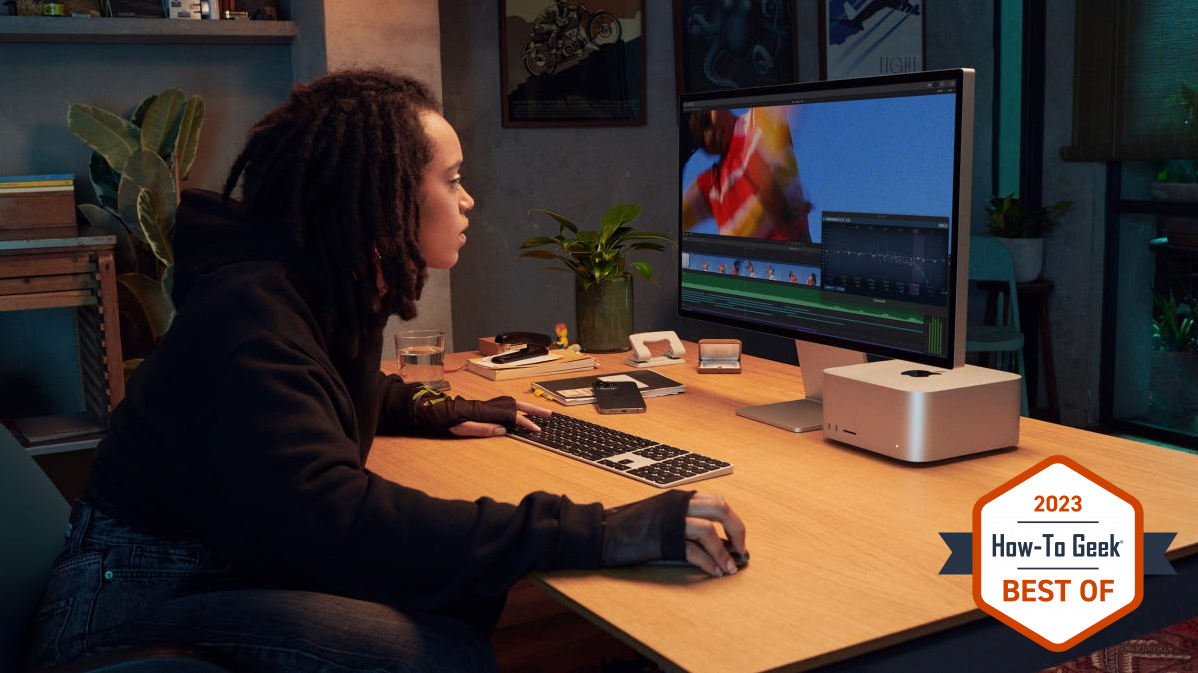
Pros
- ✓ Seamless experience with macOS
- ✓ Excellent color accuracy
- ✓ Extra goodies like a built-in webcam and mic array
Cons
- ✗ Available stands aren’t very ergonomic
- ✗ No AdobeRGB mode
While most of our recommendations will play well with macOS computers, Apple’s Studio Display delivers the most effortless experience. You will face no scaling, power, sleep, or other issues with the monitor. In addition, it sports a 27-inch 5K display with exceptional color accuracy and excellent uniformity out of the box.
In typical Apple fashion, the build quality and construction of the Studio Display are top-notch. And while the two stand options may not be the most ergonomic, you can opt for a VESA mount adapter.
You only get a single Thunderbolt 3 port regarding video inputs, but it can deliver up to 96W power to a connected MacBook for charging. Apart from the TB3 port, three USB-C ports are rated for USB 3.2 Gen 2 speeds, which you can use to connect peripherals or storage devices.
Additionally, the Studio Display has an ultra-wide camera, a three-mic array, and a six-speaker system that you can use while making video calls. Such features, particularly the camera and the mic, are uncommon on monitors.
Unfortunately, the base Studio Display model has a glossy finish on the screen, which isn’t great if you deal with glare. But you can pay extra for the Nano-texture glass that does a better job of dealing with glare and reflections. The Apple monitor also doesn’t include an AdobeRGB mode. So if you are someone who frequently prints their photos, you might need to look into another option.
Best Mac Monitor for Photo Editing
Apple Studio Display
Apple’s Studio Display is a beautiful and well-rounded 5K monitor for your Mac. It offers superb color accuracy and has excellent brightness uniformity.
Best Monitor for Video Editing: Eizo ColorEdge CG319X
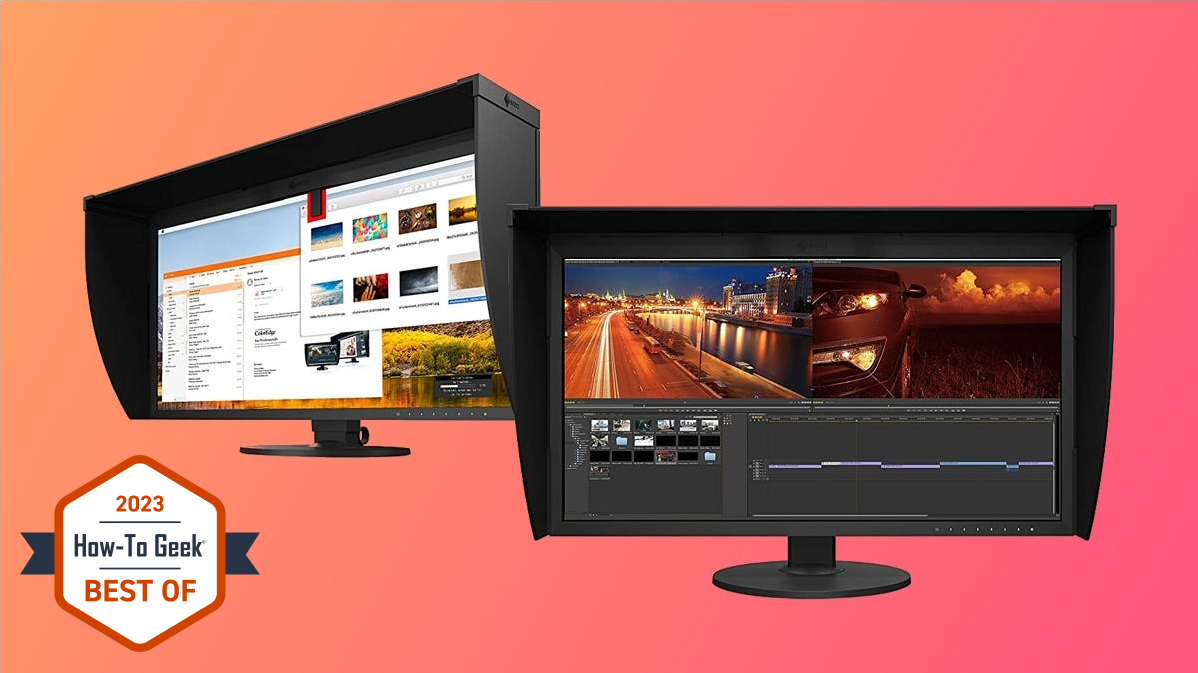
Pros
- ✓ Factory calibrated for DCI-P3, Rec. 709, and Rec. 2020
- ✓ Built-in calibration sensor
- ✓ True DCI 4K resolution
- ✓ 98% DCI-P3 coverage
Cons
- ✗ Expensive
- ✗ No USB Type-C input
It’s hard to go wrong with the Eizo ColorEdge CG319X as a video editing monitor. The CG319X is a fantastic pro-grade 31.1-inch monitor that shines in pretty much everything it does and has been built for creative professionals.
For example, it has a true DCI 4K (4096 x 2160 pixels) resolution, perfect for working with film. Another helpful feature of the Eizo monitor is the support for refresh rates from 24fps to 60fps, so you can view and edit videos as they were recorded.
As you can expect, it also comes with factory calibrated presets for DCI-P3, Rec. 709, and Rec. 2020, three of video production’s most commonly used color gamuts. PQ (DCI and Rec. 2100) and HLG (Rec. 2100) presets are also present for working with HDR content. Speaking of gamuts, the monitor covers 98% of DCI-P3 color space.
Moreover, like the Eizo ColorEdge CG2700S, it has an integrated sensor for self-calibration. So you don’t need separate hardware to keep it calibrated, but if you want to double-check, external calibrators can be supported.
Connectivity options include two DP 1.2 and two HDMI ports. There is, however, no USB-C port. But you get three USB Type-A ports to connect peripherals and storage devices.
Its pricing is the only thing that may deter some of the buyers. But otherwise, you’ll be hard-pressed to find any faults in it. If you want something affordable, the Asus ProArt Display PA348CGV is a good option. It has an ultrawide 1440p screen that comes factory calibrated. Plus, you get 98% of the DCI-P3 coverage for video work.
Best Monitor for Video Editing
Eizo ColorEdge CG319X
From DCI 4K resolution to exceptional color accuracy, the Eizo ColorEdge CG319X packs everything you need for professional video editing.
Frequently Asked Questions
How do I calibrate my monitor for photo editing?
To calibrate your monitor, you can use a calibration kit, such as Spyder X Pro or Calibrite ColorChecker Display Pro. These kits require some financial investment but are worth the money for professionals. If you don’t want to spend the money, both macOS and Windows come with built-in calibration tools, and you can find them in the display settings.
What monitor settings are best for photo editing?
To get your monitor ready for photo editing, you can calibrate it for the color gamut you will use, such as sRGB or AdobeRGB, and make sure you choose the correct ICC profile while editing the photos.
How do I clean my computer monitor?
You can clean your computer monitor with a dry microfiber cloth. But if there are any stubborn smudges or grime, you can spray some distilled water on the cloth for help. Avoid abrasive materials, alcohol-based cleaners, or directly spraying water on the monitor.
How do I measure a computer monitor?
You can get the size of a computer monitor by measuring the screen diagonally. But make sure to ignore the bezels.
How do I connect two monitors to a computer?
You will first have to check whether your computer can support two monitors by contacting the manufacturer. Then, if there are two video output ports on your computer, you can use each to connect a monitor. For example, you can connect one monitor to an HDMI port and the other to the DisplayPort. But if you don’t have multiple video-out ports, like on a laptop, a USB-C hub or dock can also help.
The Best Computer Monitors of 2023
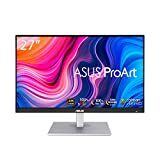
Best Monitor Overall
ASUS ProArt PA279CV
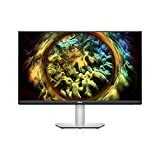
Best Budget Monitor
Dell S2721QS
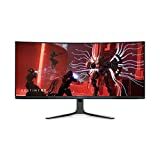
Best Gaming Monitor
Dell Alienware AW3423DW
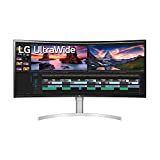
Best Ultrawide Monitor
LG 38WN95C-W
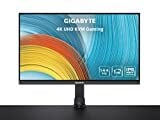
Best 4K Monitor
Gigabyte M32U
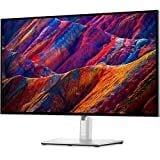
Best Monitor for Mac

